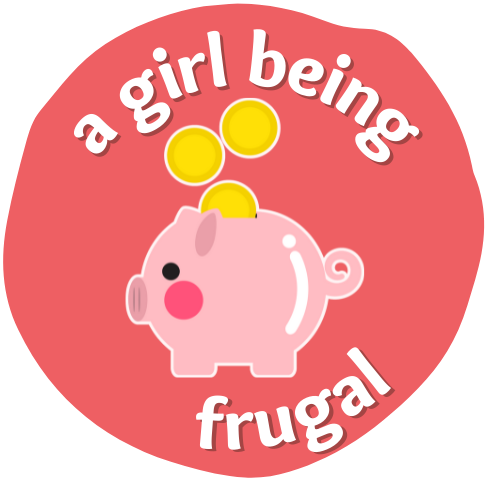Budgeting has become essential for many individuals and families in today’s fast-paced world. It not only helps to manage finances effectively but also ensures long-term financial stability. The $40 challenge is a way to test and improve budgeting skills by limiting grocery expenses for two weeks.
This challenge aims to encourage individuals to be mindful of their spending habits and find creative ways to stretch their budgets. By planning meals, shopping smartly, and adopting frugal living strategies, participants can survive on a budget and gain valuable insights into their spending patterns. Join us as we dive into the details of mastering the $40 challenge!
The importance of budgeting in daily life
Budgeting plays a crucial role in managing personal finances. It allows individuals to have control over their money, prioritize expenses, and save for future goals. By creating a budget, people can track their income and expenses, identify areas of overspending, and make necessary adjustments.
Budgeting helps to avoid unnecessary debt and provides a sense of financial security. It also promotes responsible spending habits, encourages saving, and allows individuals to achieve their financial objectives. Overall, budgeting is an essential tool for anyone looking to achieve financial stability and peace of mind.
Setting up the $40 challenge and its purpose
The $40 challenge is a budgeting exercise aimed at helping individuals or couples survive on a tight budget for two weeks. The purpose of this challenge is to encourage people to become more mindful of their spending habits and find creative ways to make the most out of limited resources.
By setting a strict budget of $40 for groceries and other essential expenses, participants are forced to prioritize their needs and make conscious choices. This challenge not only teaches valuable money management skills but also promotes resourcefulness and frugal living.
Meal Planning and Grocery Shopping
Meal Planning and Grocery Shopping can play a crucial role in successfully completing the $40 challenge. It’s important to create a detailed meal plan for the two weeks to ensure you have enough food to sustain you. Start by making a list of meals and snacks, taking into account ingredients that are affordable and versatile.
When grocery shopping, it’s essential to stick to your list and avoid impulsive purchases. Compare prices at different stores and consider buying in bulk to save money in the long run. Being organized and mindful while planning meals and shopping for groceries will help you make the most out of your limited budget.
Creating a meal plan for two weeks on a tight budget
When it comes to creating a meal plan for two weeks on a tight budget, it’s important to be strategic and resourceful. Start by identifying affordable and versatile ingredients that can be used in multiple meals. Plan meals that can be easily made in bulk and frozen for later use. Incorporate budget-friendly staples like rice, pasta, beans, and canned vegetables.
Look for sales and discounts at your local grocery store to save even more. Don’t be afraid to get creative and try new recipes that are both nutritious and economical. By planning ahead and making the most out of every ingredient, you can successfully navigate the $40 challenge and feed yourself delicious meals for two weeks.
Smart grocery shopping tips to save money
To save money on your grocery shopping, here are some smart tips to keep in mind. First, make a list and stick to it to avoid impulse buying. Plan your meals and ingredients ahead of time to avoid wasting food and money. Take advantage of sales and discounts by checking the store flyers before you go shopping. Consider shopping at discount stores or buying generic brands instead of name brands.
Buy in bulk for items you frequently use, as it is often cheaper in the long run. Lastly, avoid shopping when you’re hungry to prevent unnecessary purchases. By implementing these strategies, you can stretch your budget and save money on groceries.
Cooking on a Budget
Cooking on a budget doesn’t mean compromising on flavor or nutrition. With a little creativity and planning, you can whip up budget-friendly meals that are delicious and satisfying. Look for affordable ingredients such as beans, lentils, and rice that can be used as the base for a variety of dishes. Embrace leftovers and repurpose them into new meals to minimize waste.
Batch cooking is also a great way to save time and money, as you can prepare larger quantities and freeze portions for later use. Don’t be afraid to experiment with spices and seasonings to add flavor without breaking the bank. By cooking on a budget, you can enjoy tasty meals while staying within your financial limits.
Budget-friendly recipes for breakfast, lunch, and dinner
When cooking on a budget, it’s important to find recipes that are not only affordable but also delicious. For breakfast, consider options like overnight oats with cheap ingredients such as oats, milk, and fruit. For lunch, soups and salads are a great budget-friendly choice. Use cost-effective ingredients like beans, vegetables, and grains to create filling and nutritious meals.
When it comes to dinner, one-pot meals like chili or stir-fry are perfect for stretching your budget. Get creative with spices and herbs to add flavor without breaking the bank. With these budget-friendly recipes, you can enjoy tasty meals without worrying about your wallet.
Meal prep and batch cooking techniques
Meal prep and batch cooking are excellent strategies for saving time and money while sticking to a tight budget. Plan your meals for the week ahead and prepare them in bulk. Cook large batches of grains, proteins, and vegetables that can be portioned out for multiple meals. Invest in reusable storage containers to keep your prepped meals organized and fresh.
This way, you can easily grab a prepared meal when you’re pressed for time or don’t feel like cooking. Also, batch cooking allows you to take advantage of bulk discounts on ingredients and reduces food waste by using up all your groceries before they spoil.
Frugal Living Strategies
Frugal Living Strategies: Cutting down on non-essential expenses is key to living on a tight budget. Look for ways to save on everyday items, such as buying in bulk or opting for generic brands. Evaluate your subscriptions and consider canceling those that you don’t truly need. Reduce energy consumption by using energy-efficient appliances and practicing good habits like turning off lights when not in use.
Explore free or low-cost entertainment options, like visiting local parks or borrowing books from the library. By implementing these frugal living strategies, you can stretch your budget and achieve long-term financial wellness.
Cutting down on non-essential expenses
Cutting down on non-essential expenses is a crucial step towards mastering the $40 challenge. By identifying and eliminating unnecessary expenditures, you can save a significant amount of money. Start by evaluating your subscriptions and canceling those that you don’t truly need. Look for ways to reduce your discretionary spending, such as dining out less frequently or limiting impulsive purchases.
Consider buying in bulk or opting for generic brands to save on everyday items. Being mindful of your spending habits and prioritizing essential expenses will help you stretch your budget further and achieve financial success.
Saving money on utilities, transportation, and entertainment
When trying to master the $40 challenge, it’s important to find ways to save money on utilities, transportation, and entertainment. Here are some tips to help you cut down on these expenses:
- Utilities: Reduce your energy consumption by turning off lights and appliances when not in use, utilizing natural light during the day, and adjusting the thermostat to save on heating and cooling costs.
- Transportation: Opt for public transportation, carpooling, or biking instead of driving alone. Consider using rideshare apps or walking for shorter distances.
- Entertainment: Look for free or low-cost activities such as parks, libraries, and community events. Utilize streaming services or borrow movies and books from the library instead of purchasing them.
By adopting these strategies, you can significantly reduce your expenses in these areas and stay within your budget.
Creative Ways to Stretch Your Budget
One of the key strategies in mastering the $40 challenge is finding creative ways to stretch your budget. Here are some tips to help you make the most out of your limited funds:
- DIY household products and cleaning supplies: Instead of buying expensive cleaning products, try making your own using ingredients like vinegar, baking soda, and essential oils. This not only saves money but also reduces exposure to harmful chemicals.
- Utilizing coupons, discounts, and cashback apps: Take advantage of coupons, discounts, and cashback apps to save on groceries, clothing, and other essentials. Sign up for store loyalty programs and keep an eye out for special promotions to maximize your savings.
By implementing these cost-effective strategies, you can stretch your budget even further and make your money go a long way.
DIY household products and cleaning supplies
One creative way to stretch your budget is by making your own DIY household products and cleaning supplies. Instead of buying expensive cleaning products, you can use simple ingredients like vinegar, baking soda, and essential oils to create effective cleaning solutions.
Not only does this save money, but it also reduces exposure to harmful chemicals found in store-bought products. DIY recipes for all-purpose cleaners, laundry detergent, and even air fresheners are readily available online. By opting for homemade alternatives, you can keep your home clean while staying within your budget.
Utilizing coupons, discounts, and cashback apps
When it comes to stretching your budget, utilizing coupons, discounts, and cashback apps can be a game-changer. These tools allow you to save money on your shopping expenses and even earn cashback on your purchases. With the rise of digital coupons and mobile apps, it has become easier than ever to find discounts and deals on a wide range of products.
Whether it’s grocery coupons, online promo codes, or cashback offers, these resources can help you maximize savings and make your money go further. By incorporating these money-saving strategies into your shopping routine, you can get more value out of your purchases and stay within your budget.
The $40 challenge offers a valuable lesson in budgeting and frugal living. By carefully planning meals, shopping smartly, and utilizing creative strategies, it is possible to survive on a tight budget for two weeks. The experience not only helps in saving money but also promotes mindful spending habits and resourcefulness.
It highlights the importance of prioritizing needs over wants and finding alternative solutions to everyday expenses. By sustaining these frugal habits, individuals can achieve long-term financial wellness and greater control over their finances. So, why not take on the challenge and embark on a journey towards a more financially secure future?
Reflecting on the $40 challenge experience
After successfully completing the $40 challenge, individuals can reflect on their experience and the valuable lessons learned. The challenge highlights the importance of budgeting and careful meal planning and the creativity and resourcefulness that can arise when faced with a tight budget.
Participants may find that they have new-found appreciation for the value of money, as well as a greater understanding of their spending habits. Reflecting on the $40 challenge can provide motivation to continue practicing frugality and budgeting in order to achieve long-term financial wellness.
Sustaining frugal habits for long-term financial wellness
To maintain long-term financial wellness, it’s important to sustain frugal habits even after completing the $40 challenge. By continuing to prioritize needs over wants, individuals can save money and avoid unnecessary expenses. It’s crucial to regularly review and update budgets, track spending, and find ways to reduce costs further.
Building an emergency fund and investing in a retirement account are also important steps towards financial security. Also, it’s essential to continually educate oneself about personal finance, seek out money-saving tips, and surround oneself with a supportive community that encourages frugal living. With consistency and determination, sustaining these frugal habits will pave the way for a brighter financial future.






